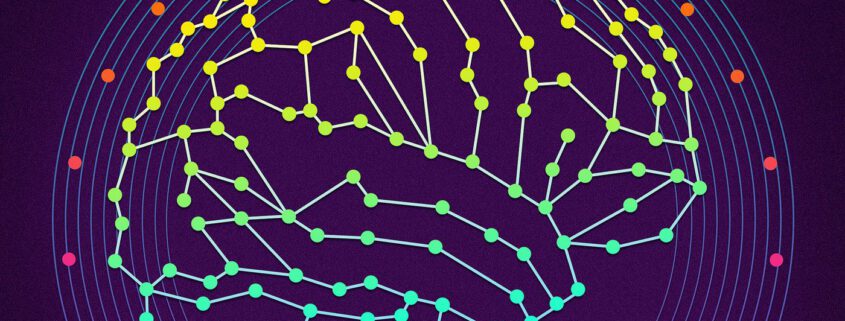Chemistry of Pleasure
Nitric Oxide
Cells in our brains, blood, blood vessels, and lungs produce a signaling molecule, or gas, called nitric oxide or NO (not to be confused with the nitrous oxide used in dentistry, better known as laughing gas). The production of nitric oxide is triggered by laughter, orgasm, and other experiences of pleasure, as well as by eating fruits and vegetables high in antioxidants, meditating, and exercising (nitric oxide is at work in the sensation of “runner’s high”). Nitric oxide relaxes blood vessel walls, which allows the vessels to widen and encourages more blood to flow through them. In fact, Viagra works by using this natural process in the body: it triggers release of nitric oxide, and the extra blood flow to the penis results in an erection. Similarly, nitroglycerin can stop a heart attack because it, too, releases nitric oxide that widens blood vessels and eases constrictions.
The sensation of nitric oxide being released lasts only a few seconds, but it is a marvelous few seconds! It sets off a chain reaction of other feel-good chemicals in the body. You feel a shift in your energy and an exquisite sense of relaxation. After its release into the system, nitric oxide works with anticoagulants to prevent strokes, signals white blood cells to fight infections and destroy tumors, balances levels of neurotransmitters, and reduces cellular inflammation. The more often your body creates and releases nitric oxide, the softer, more flexible, and wider your blood vessels become because you’ve trained them to relax. Your circulation improves.
Saying Yes to NO
Saying yes to NO actually helps your body function better and avoid serious illness and disease. I find it helpful to think of nitric oxide as the physical manifestation of the vital life force (also called chi or prana) that animates our bodies. Stanford University research on sea urchins shows that nitric oxide is released when the egg and sperm meet in a peak moment of creativity. On the other end of the life spectrum, the brilliant white light that people who have had near death experiences report seeing upon the moment of death may be the result of a burst of nitric oxide. And nitric oxide given to premature babies gets their lungs working, since lung tissue is erectile in nature. Nitric oxide is like the very breath of life. It’s even what lights up a firefly.
Researcher Herbert Benson, M.D., describes nitric oxide as a crucial element in what’s known as a “peak experience” of ecstatic flow, and explains that it allows new neural connections to be made in the brain. Neural connections are the pathways along which information travels. It’s possible that these brain changes lead to new habits of mind. As Benson says, NO is “a biological mechanism that somehow encompasses the dynamics of human belief, the creative process, the essence of physical and mental performance, and even spiritual experience.”
Depleting Nitric Oxide
Anger, fear, and grief deplete nitric oxide. If the endothelial lining of your blood vessels has been damaged by free radical molecules created by stress and physical toxins, your body can’t release enough nitric oxide to actually reduce free radical activity and tissue damage. The nitric oxide mechanism is a positive feedback loop: Create more and you make it easier for your body to create more. Pleasure leads to more pleasure. Life renews itself, while anger, fear, and grief suck the life out of you. To be an ageless, healthy goddess, you must learn to cultivate your ability to experience emotions such as joy and compassion, release grief and resentment, and allow yourself to feel righteous anger when appropriate. For example, if you see someone harming an animal or a child and you stand up for the innocent being, you are contributing to your health and well-being (as long as you’re physically safe confronting them). The worst thing you can do for yourself is hold on to destructive emotions. The biochemistry of pleasure can counteract the biochemistry of aging.
Endorphins
Nitric oxide is the über-neurotransmitter that increases and balances levels of all the others: endorphins, dopamine, serotonin, oxytocin (a bonding neurotransmitter released while breast-feeding, experiencing an orgasm, or even enjoying the company of others), and DMT, which is generated in the pineal gland in the brain and probably plays a role in dreaming. Although we tend to think that neurotransmitters are generated and used only in the brain, we actually have cells throughout the body that can both produce and receive them. The gut produces more serotonin than the brain does—generated largely as a result of the huge number of healthy bacteria that live in what’s known as your microbiome. When you have a visceral negative reaction to something—you can’t “stomach” it—that’s your neurotransmitters sending you the message “this doesn’t feel right for me.” Conversely, you can get a warm, happy feeling in your belly when neurotransmitters that affect mood are released as a result of a positive experience, thought, or feeling. The idea is to create that warm feeling through the emotional experience of genuine pleasure that supports your well-being, health, and agelessness.



